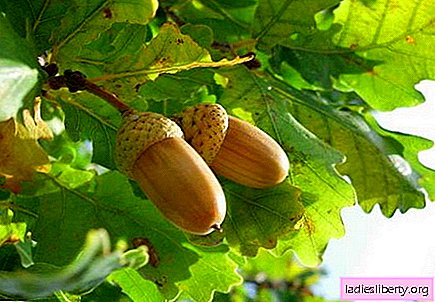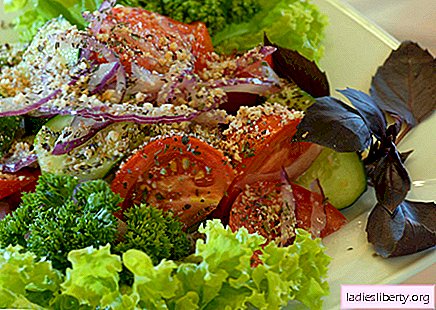
Oak - general description
Oak is a powerful tree of the beech family, reaches a height of 30 meters or more. It is characterized by high life expectancy - up to 500 years, and this is far from the ultimate age. According to some reports, Stelmuk oak, comfortably "living" in Lithuania, more than two thousand years.
Oak crown, consisting of leathery leaves, is sprawling, powerful, has an ovoid or cylindrical shape. The bark of the tree is smooth, with a characteristic gray tint; however, over the years, it becomes rougher, darker and acquires a typical crackle. Oak shoots are brown or red-brown, the kidneys in shape resemble an inverted egg.
Oak begins to bloom half a century after birth. As a rule, this occurs in the spring - from April to May. Fruits - single-nosed acorns - ripen in the first half of autumn. Oak is a photophilous plant that constantly reaches for the light, changing its direction depending on the lighting. That is why some oaks have bizarrely curved bends.
Oak - types and places of growth
In the world flora, the genus unites about 600 species. Areas of the Northern Hemisphere have become the natural habitats of the evergreen tree. To survive, an oak tree needs a temperate or warm climate, which is why oak does not grow in some countries. You will also not find a single instance in South America, Australia and Africa, with the exception of the Mediterranean strip.
In Russia, two types of oak are most often found: pedunculate oak (ordinary) and rock oak. The first is distributed practically throughout the territory, the second - mainly in the western part. Both species make up the main composition of Russian oak forests, the number of which is steadily falling every year.
Oak - healing properties
English oak bark and leaves are widely used in folk medicine and homeopathy. They have anti-inflammatory, astringent, hemostatic, sedative and anthelmintic effects. Decoctions and tinctures are used for diseases of the gastrointestinal tract, diarrhea, colic, colitis, exacerbation of peptic ulcer, bleeding, varicose veins, liver and splenic diseases.
Oak bark is also used as a remedy for hemorrhoids, urinary incontinence, eczema (lotions), frostbite (in the form of baths), burns, scrofula, bleeding gums. You can not do without it and in the presence of halitosis, excessive sweating of the legs. And baths with the addition of oak extract improve blood circulation, give good health, strengthen immunity and the body as a whole.
Oak - dosage forms
Young oak bark is used as a medicinal raw material, since the old bark loses its strength due to a decrease in the concentration of tannins over the years. Less commonly used are leaves that are collected until mid-May. Harvesting young branches and bark during sap flow.
Raw materials are dried under a canopy in the shade, and young branches are hung in small hanging heaps. The best preservation of the finished ingredients provides paper-cardboard or wooden containers. Shelf life of oak bark - five years, dry leaves - up to 1 year.
Oak - recipes
The bark is used as an internal remedy in the form of decoctions, infusions, tea, enemas, douching, and external - in the form of lotions, poultices and rinses.
Strong broth for external use: a tablespoon of fresh or dry raw materials (leaves and bark in equal proportions) is added to 200 ml of boiling water, boiled for 1-3 minutes. Next, the broth needs to be cooled and filtered.
For internal use (universal): 200 ml of water is poured into enameled dishes, 20 g of dry bark extract is added, the lid is closed and the contents are treated in a water bath for half an hour, not forgetting to stir frequently. Then it is cooled, squeezed, the broth is diluted with boiled water to obtain a volume of 200 ml. Drink half a glass two p. in a day.
Firming tea: a teaspoon of crushed leaves (or 3-4 whole leaflets) is poured 400-500 gr. boiling water, insist a couple of hours and distribute tea for 3-8 receptions per day.
Tincture to remove blackheads: a universal decoction of oak bark is mixed with vodka (in a ratio of 1: 2, for example, 20 ml of broth and 40 g of vodka). The resulting lotion is wiped on the face and other problem areas.
Oak - contraindications
- children's age (up to 12 years);
- individual intolerance;
- thrombosis;
- persistent constipation.
An overdose should not be allowed, since tannins, when used inappropriately, cause vomiting, bloating, colic and other problems with the gastrointestinal tract.
Comments











